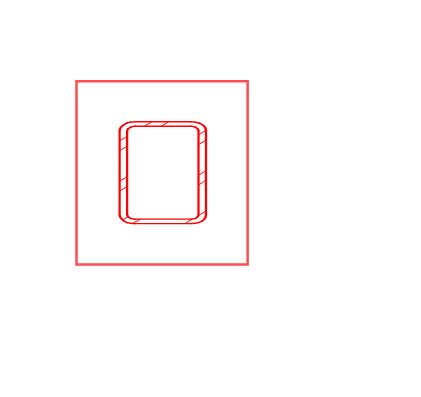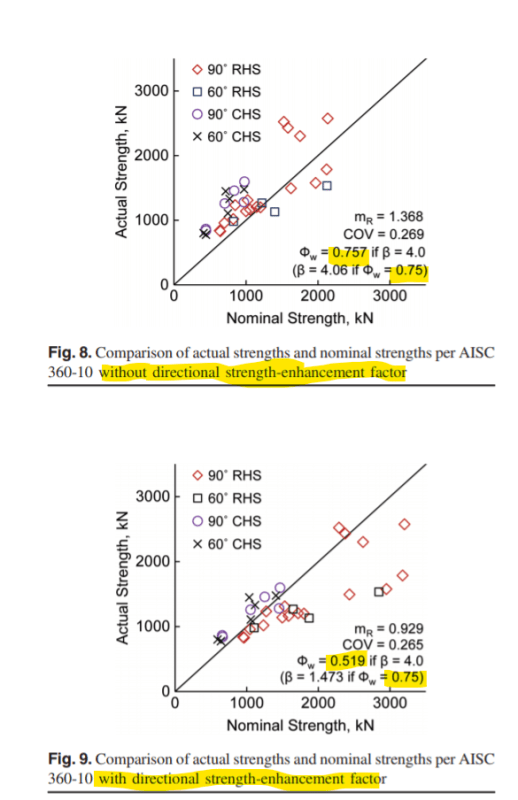The journal article above has testing results for HSS to plate connections where the weld is the critical failure point. The HSS was then loaded to connection failure in tension.
Basically, they found that when you try to use the directionality provisions in the US and Canadian codes for HSS with a perimeter weld, the level of reliability ends up being significantly less than intended.
To get the reliability that the code says it's trying to achieve, the capacities you get using the provisions for 90 degree loading would need to be multiplied by 0.62 for CSA S16-14 and 0.69 for AISC 360-10. I back calculated these values by comparing the code mandated phi factor for welds to the effective phi factor that their study determined was necessary to meet the code target reliability goals.
The attached image shows the testing results compared against AISC 360-10 calculated values. The nominal calculated strength is the strength prior to application of the phi factor. They then calculated the effective phi value that would need to be applied to reach the reliability index (beta=4.0) that the code uses as a target.
If you use the non-directionally amplified capacity calc, you basically get the reliability that the code wants. If you use the directionally amplified calc in this situation, you get significantly less.
The Eurocode calc method did pretty well.
CSA S16-14 is frustrating because they let you go even higher with the directionality capacity amplification than the previous revision but then hid a note in the code appendix saying that you might want to think about whether you want to use it in this situation based on recent research. Not even a uses note in the code body, when they obviously realized there was an issue. I can guarantee most people aren't noticing that.


